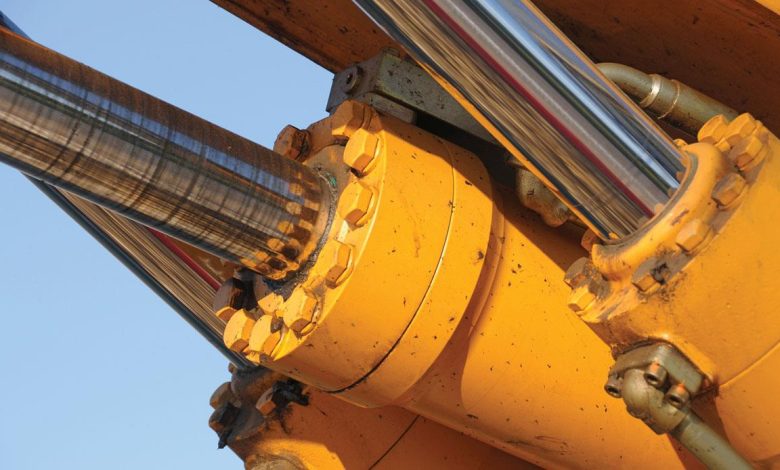The Importance of Hydraulic Hoses

The importance of hydraulic hoses cannot be understated. Without them, your work would be impossible. The ability to move heavy objects can be challenging. If you’re not careful, you could damage a machine and cause major delays. When you need a new hydraulic hose, choose a hose that is widely available and is easily available from a distributor. Considering several options will minimize delays caused by a parts shortage.
Durability
The durability of hydraulic hoses is a critical factor in any hydraulic system. A broken hose can lead to costly downtime, and downtime costs millions of dollars. Hoses have varying strengths and capacities, and the quality of materials and design influences durability. Pressure rating is an important consideration, as high pressures can wear hoses out. Depending on the use, different compounds may be used to provide additional strength or flexibility.
Temperature is another factor in determining the durability of hydraulic hoses. The temperature of hydraulic fluid can vary widely, and a hose may be exposed to temperatures below freezing. This variable temperature can damage a hose, which causes it to crack or fail. In addition to temperature, a hydraulic hose may be placed near a heat source or used in extremely cold conditions. It is important to choose a hose with the proper temperature range for your application, and to protect it from excessive heat.
The bend radius of hydraulic hoses is an important factor to consider. A hose with a small bend radius will break or damage its reinforcement. Ideally, hydraulic lines have a parallel contour to the machine’s contours. Parallel lines reduce the risk of hose damage and allow for easier repairs. The bend radius of a hydraulic hose is critical to its durability and function. In addition to increasing strength, the hose should also be flexible enough to allow for movement of parts.
Hydraulic hoses are highly durable, but they do eventually break. Their pressure cycle will eventually cause a failure and result in worker or property injury. A damaged hose can cause costly cleanup, wasted production, and unscheduled downtime. The material and labor costs associated with a failed hydraulic hose are significant. Experts recommend proactive replacement of hydraulic hoses whenever they begin to show signs of wear.
Material
The type of material used in hydraulic hose assemblies is determined by the hose’s application. Consider the type of fluid and pressure, hose ends and couplings, delivery (volume and velocity) and environmental conditions to select the best hose for your application. Whether your hydraulic hoses are made from steel or rubber depends on the type of application and environmental conditions. Some hydraulic hoses are flexible or have reinforced outer layers.
The outer shell of the hose protects the wire reinforcement and inner tube. The material can withstand temperature changes and abrasion and is lighter than metal. In some cases, the inner tube of the hose is made of nylon or co-polyester. Hoses that are not electrically conductive need to be made from synthetic fibre, such as those for aerial lifts. Regardless of the material used, the outer cover is essential to the function and durability of hydraulic hoses.
Aside from the outer appearance, hydraulic hoses must meet specific performance specifications and dimensions. The outside diameter is usually a nominal specification, although corrugated hoses are often much wider. The minimum bend radius is based on the acceptable cross-section deformation of the hose and the mechanical bending limit of its reinforcement.
These wire reinforcement layers may be textile, plastic, or metal. In addition, wire braid and spiral reinforcement can increase flexibility without sacrificing strength. In addition to the material used, hydraulic hoses are available with additional features such as a flex ring or a connector. Visit Now
Application
There are many variables to consider when choosing a hose. For instance, there are several factors to consider when determining which type of hydraulic hose to purchase. Considering these factors before purchasing a hose is essential.
In terms of geography, the Asia-Pacific region will lead the way in the global hydraulic hose market. Its rapid development and increased investments are driving the market growth in this region.
If you have any questions about the different types of hydraulic hoses, don’t hesitate to contact us! Our customer service representatives will be more than happy to help you decide what type of hydraulic hoses you need for your application.
There are two basic types of hydraulic hoses. First, you have the size. Outside diameter is the measurement of the entire cross-section of the hose. Outside diameter is the nominal specification for corrugated hoses. Then there’s the length. This is the maximum reach between two endpoints, which is often a factor in the pressure drop in the system. Likewise, the hose’s length is an important performance specification. If the hose is too long, it will cause more head loss during movement.
Maintenance
Regular inspections of hydraulic hoses are essential for your equipment. You must check for wear and tear, and replace worn out hoses with new ones as soon as possible. You must also make sure that all of your hydraulic hoses are free of cracks and breaks, and that there is no internal damage.
To prevent leaks, you must perform regular inspections and reroute hoses regularly. Also, check the connectors regularly. Damaged connectors can cause leaks, and neglecting this can lead to costly repairs. Likewise, a hose that is too long can burst at the fitting. Regular inspections and maintenance will ensure that your hydraulic hoses stay in good condition and prevent costly repairs down the line.
Regular inspections are essential for hydraulic hoses. While regular inspections may not be necessary every time, a thorough inspection will ensure that your hoses are still working safely and efficiently. If your hoses have a crack, it will be important to replace them before they wear out, as damaged hoses pose a threat to your safety and the environment around you.
Chemical compatibility
The selection of a hydraulic hose depends on several factors including pressure, fluid temperature, ambient temperature, and any special requirements. For further assistance, you can use the Chemical Resistance Table to find the proper medium.
In addition, it is crucial to understand that different fluids require different types of hose assemblies. If the fluid in the hydraulic hose is gaseous, the hose may lose some of the fluid, either through effusion or permeation. To reduce this, consider a hose with a pin-perforated cover. In addition, chemical resistance tables show the relative resistance of different hose materials to common chemicals.
Synthetic oils and fluids containing high levels of water are not compatible with all hose materials. Chemical compatibility is even more important at higher temperatures, where the effects of the fluid are magnified.
Hydraulic hoses are crucial components of a hydraulic system. application. Proper care and maintenance of your equipment will extend its life.
Thanks for visiting wizarticle





